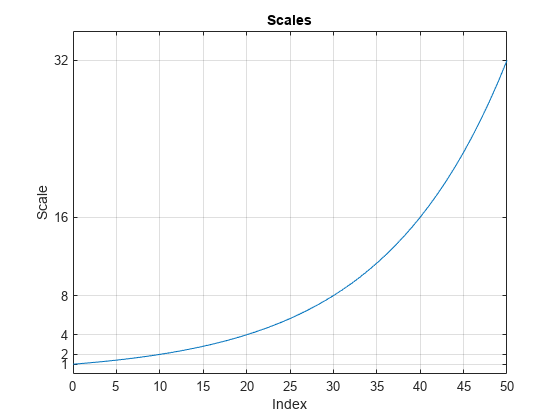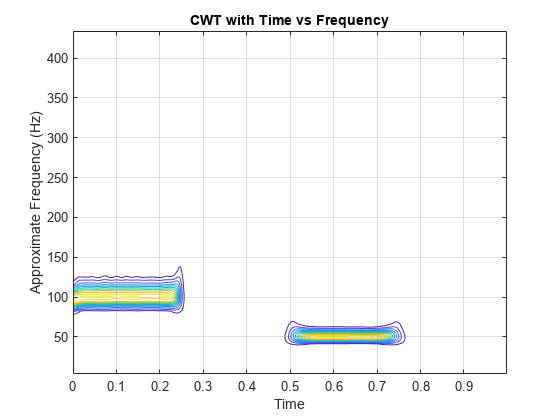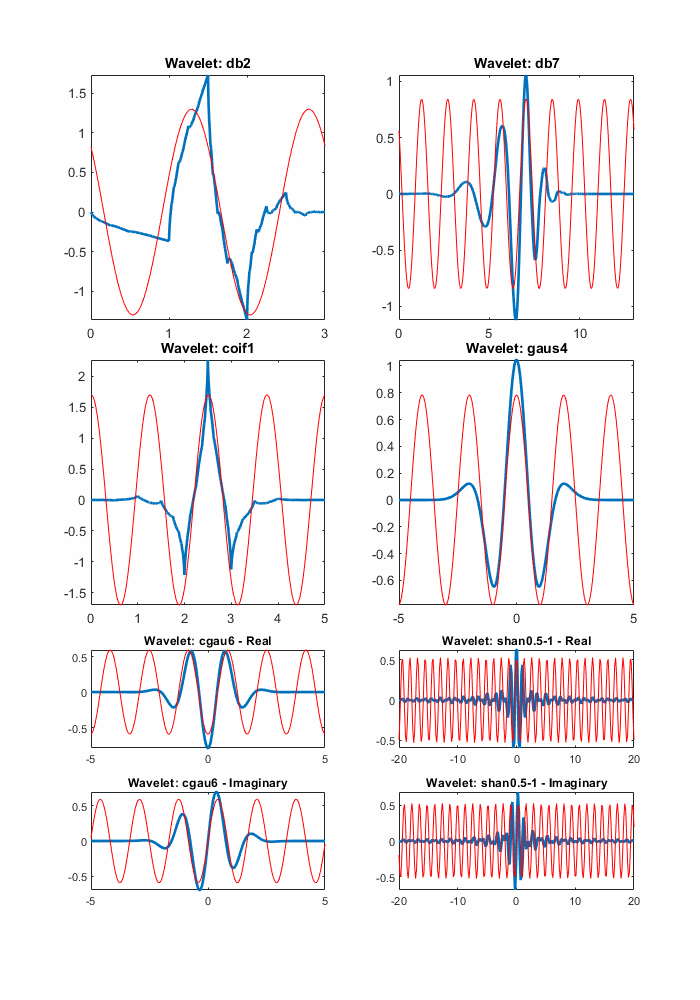This example shows how the pseudo-frequency changes as you double the scale.
Construct a vector of scales with 10 voices per octave over five octaves.
Verify that the range of scales covers five octaves.
If you plot the scales, you can use a data cursor to confirm that the scale at index is twice the scale at index . Set the y-ticks to mark each octave.
Convert the scales to pseudo-frequencies for the real-valued Morlet wavelet. First, assume the sampling period is 1. Since there are 10 voices per octave, display every tenth row in the table. Observe that for each doubling of the scale, the pseudo-frequency is cut in half.
Scale Pseudo-Frequency
_____ ________________
1 0.8125
2 0.40625
4 0.20313
8 0.10156
16 0.050781
32 0.025391
Assume that data is sampled at 100 Hz. Construct a table with the scales, the corresponding pseudo-frequencies, and periods. Display every tenth row in the table.
ans=6×3 table
Scale Pseudo-Frequency Period
_____ ________________ ________
0.01 81.25 0.012308
0.02 40.625 0.024615
0.04 20.313 0.049231
0.08 10.156 0.098462
0.16 5.0781 0.19692
0.32 2.5391 0.39385
Note the presence of the factor in scal2frq. This is necessary in order to achieve the proper scale-to-frequency conversion. The is needed to adjust the raw scales properly. For example, with:
You are really asking what happens to the center frequency of the mother Morlet wavelet, if you dilate the wavelet by 0.01. In other words, what is the effect on the center frequency if instead of , you look at . The provides the correct adjustment factor on the scales.
You could have obtained the same results by first converting the scales to their adjusted sizes and then using scal2frq without specifying .


